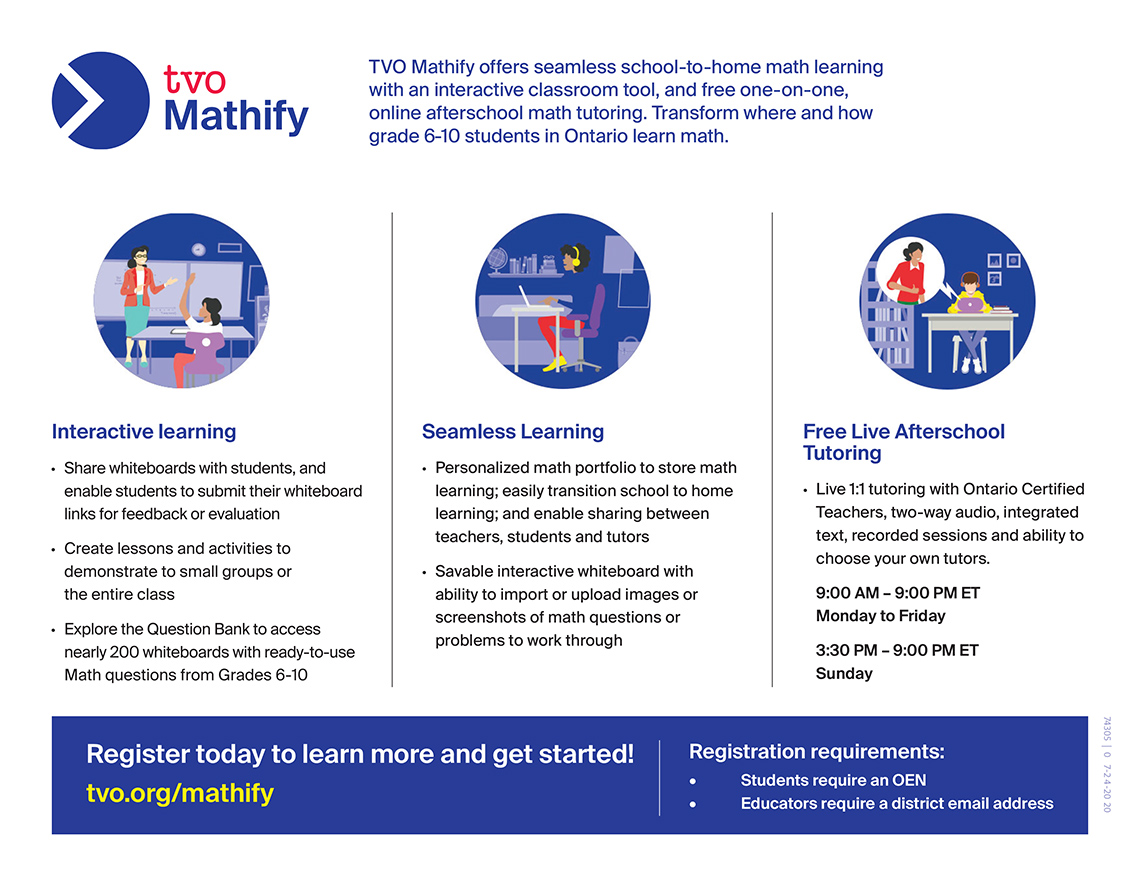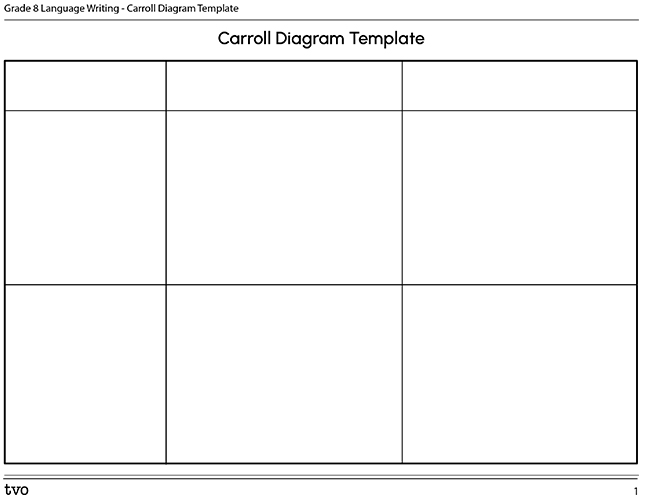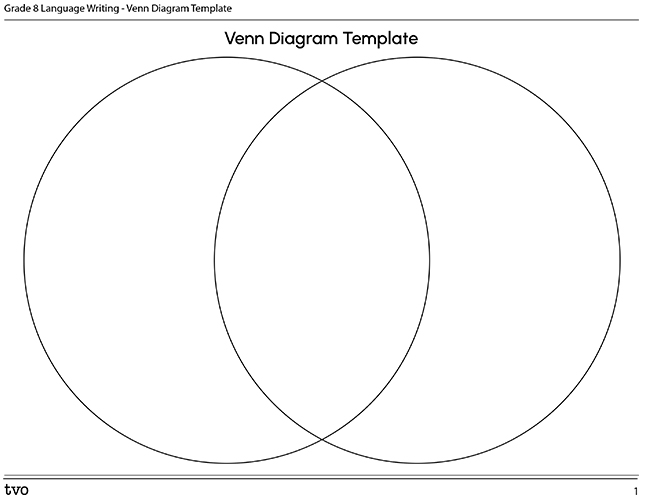Minds On
Target audience

When you explore this media text, what do you notice? What is this text promoting?
Student Success
Think-Pair-Share
Respond to the following questions using a method of your choice.
- Who is the target audience? How do you know?
- What media form is this? How do you know?
- What are some features of this media text?
Note to teachers: See your teacher guide for collaboration tools, ideas and suggestions.
Action
Elements and features
Let’s review the difference between an element and a feature.
An element is a smaller part that makes up something bigger. For example, teenagers make up an important element of society. Teenagers are a smaller group within society as a whole.
A feature is a characteristic that makes something distinct. For example, a newspaper article often features an interview. This feature, the interview, makes newspaper articles distinct from other kinds of writing.
Brainstorm with a partner or on your own, some places you’ve come across flyers and brochures.
Flyers and brochures are used to inform, promote, raise awareness, inform, and/or to sell. Both are created for a target audience depending on its purpose.
What is a flyer?
Flyers are used to promote an upcoming event (i.e., concert, speaker talk, performance, open-mic, town hall, protest). Information on a flyer includes the kind of event, the name of the event, the date, time and location, cost and perhaps a short quick message to get the audience to attend and bring along more people. Sometimes there is a discount if people arrive before a certain time, and/or if they bring a friend along. Schools create flyers to remind the student and parent body of school events like Information Night/BBQ or of an upcoming school concert.

Elements of a flyer
Flyers are usually on a single hand-out and printed on both sides and can be found being passed out on a corner of a busy intersection, at the entrance/exit of a store or theatre, pinned up on a community board, or a street post.
Features of a flyer
Flyers provide only the necessary information about “What, When, Where.” The wording and style are adjusted for the audience. Flyers often use bulleted lists and larger fonts. An effective flyer is eye-catching, with lots of colour and design. The words on a flyer are limited to a phrase or sentence about a promotion or deal. The flyer often has both sides of the paper and is usually smaller than a single 8 by 11 standard paper size. Often flyers are printed on firmer paper material, like card stock.
What is a brochure?

Brochures are usually informative and can be found in medical or dental offices, travel agencies, tourism offices, tourist areas, information booths, public transit stations, amusement parks, museums, art galleries, libraries, shopping malls and many other places.
You may receive a brochure on what to expect and how to prepare for entering high school next year such as choosing a high school, high school information evenings, and selecting Grade 9 courses.
Elements of a brochure
Brochures are longer than flyers and have several pages that unfold to read or view.
Because they are longer, brochures include more information and details than a flyer. Depending on the purpose and content of the brochure, it can contain a map (for an amusement park), possible restaurants, sights and activities in a tourism brochure for a town or city, or recommended books by different authors in a booklist brochure at a library.
Brochures will often also include accompanying photographs or images to illustrate the content. For example, in a tourism brochure, a photograph of some sites and/or restaurants will be included. In a medical office, a brochure about how to prevent or live with a health condition will include a diagram to help explain the causes of the health condition, the organ or part of the body affected, possible forms of treatment and/or of symptoms and things to help support individuals living with the condition such as diet, exercise and proper sleep, and further information resources to learn more.
Features of a brochure
A brochure has a cover or front with a title, which may also include information. It uses short paragraphs and sometimes bulleted points to present the content. There are often heading and subheadings to help organize the content. Brochures usually have images, photos, diagrams or maps depending on its purpose. Captions are used to describe the image.
A brochure:
- has a cover or front with a title (can also include information)
- use short paragraphs and/or bullet points to present the content
- uses headings or subheadings
- includes images, photos, diagrams and/or maps depending on its purpose; includes captions
- wording and style is adjusted for the audience
- multiple pages that are folded into a small book or magazine, sometimes smaller than a single 8 by 11 piece of paper, on firmer paper (card stock), includes images, photos, diagrams and/or maps, depending on its purpose
- printed on both sides of sleeves
Task 1
Examine and classify the digital media text in the Minds On. Is it a flyer or brochure? How do you know?
Notice the layout of the media text. How does the layout support the communication of the content? How is colour and visuals used to help feature the information?
Task 2
Gather two different flyers and two different brochures from your community, school or neighbourhood. Identify the target audience for the flyers and brochures.
Using a Venn or Carroll Diagram, compare the features and format of your two flyers to each other and decide which one is more effective and why. Repeat the same process to compare two brochures.
Use either the Venn Diagram Template or the Carroll Diagram template in your notebook or use the following fillable and printable document to help you get started.

Press the Activity 2 button to access the Carroll Diagram Template.
Activity 2 (Open PDF in a new tab)Consolidation
Create a Brochure
Create a brochure informing people about an environmental or social justice issue you are passionate about.
Brochure Checklist

Come up with an information event related to your brochure content such as a town hall meeting, or an information rally. Create a flyer to inform and encourage members of your community to attend.
Flyer Checklist
Reflection
I feel...
Now, expand on your ideas by recording your thoughts using a voice recorder, speech-to-text, or writing tool.
When you review your notes on this learning activity later, reflect on whether you would select a different description based on your further review of the material in this learning activity.
